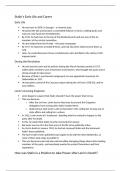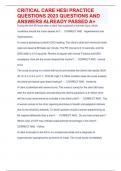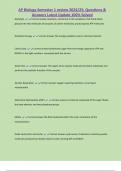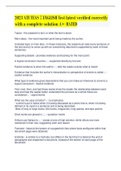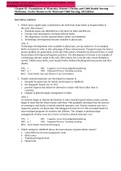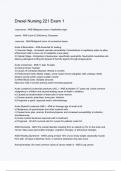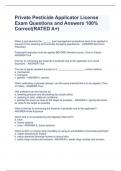Summary
Summary Revision Notes: OCR A Level History, Russia, Chapter 6 - Stalin's Rise to Power 1924-29
- Institution
- OCR
These revision notes provide a detailed summary of the sixth chapter of Michael Lynch's 'Access to History, Russia ' - the OCR recommended textbook for the Russia - paper. I used these revision notes to achieve a grade A in my history A Level.
[Show more]
